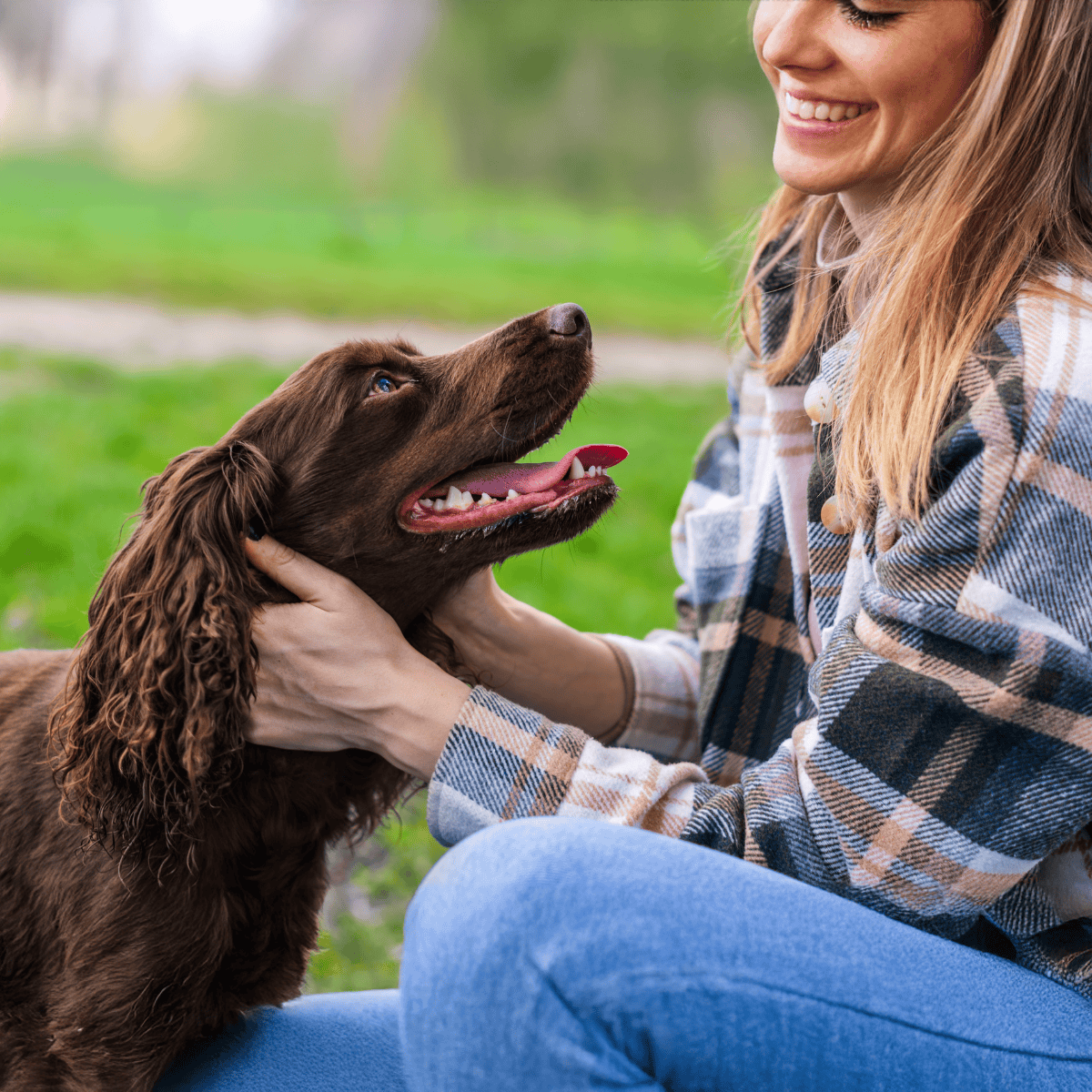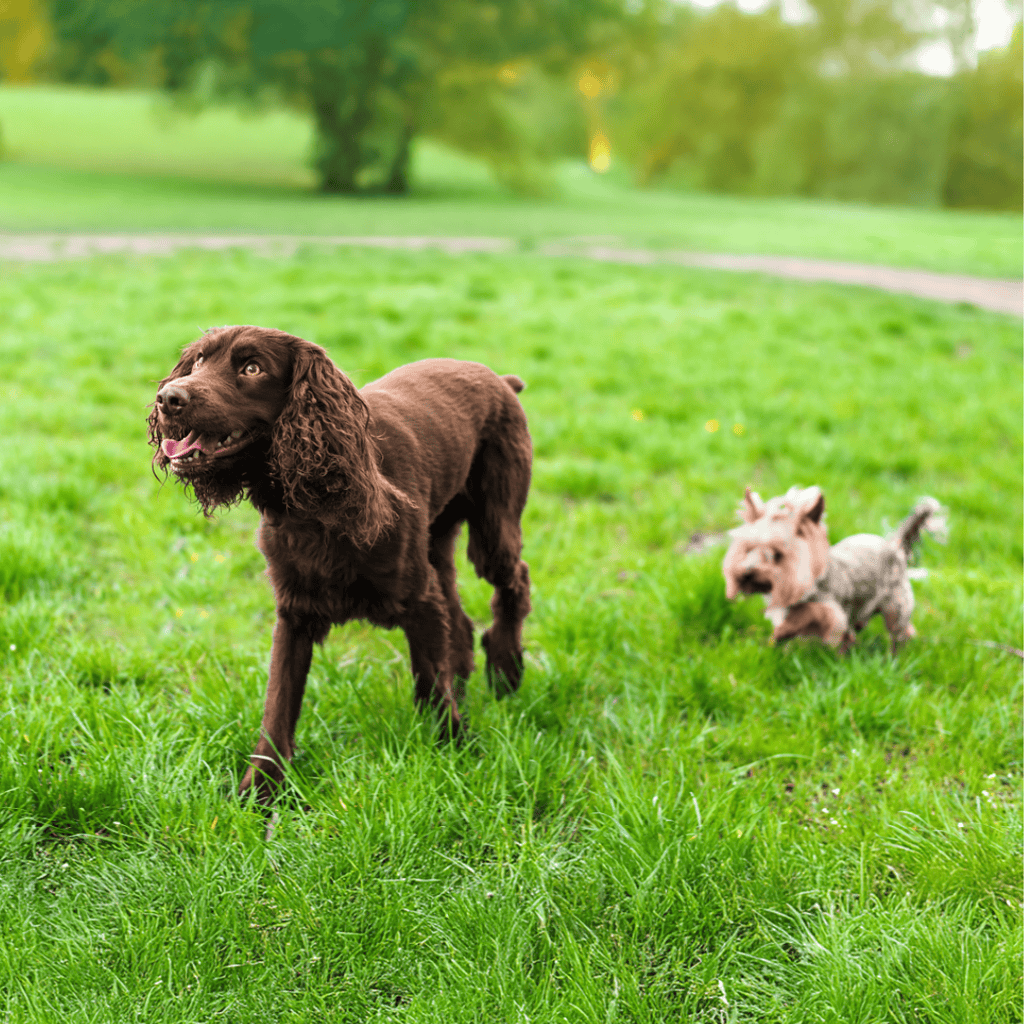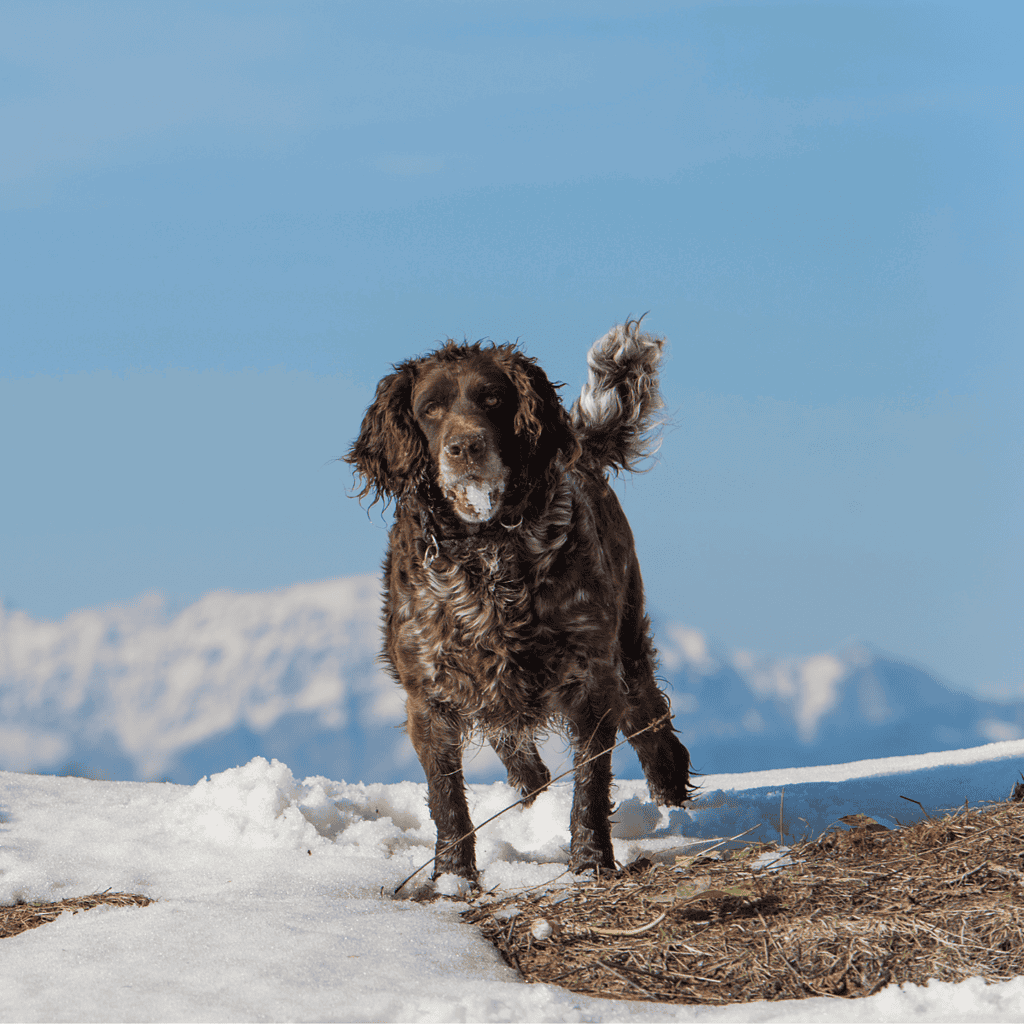
Deutscher Wachtelhund
Shortcuts
The Deutscher Wachtelhund, known as the German Spaniel, is a medium-sized, muscular gun dog renowned for its scenting ability. It excels in tracking games up to 40 hours old, rivaling the Bloodhound’s skills. This breed, exclusive to German hunters and gamekeepers, remains largely unknown.
The Deutscher Wachtelhund shines in hunting, particularly in flushing upland birds and waterfowl. Its strong drive and love for water make it indispensable for hunting activities. Beyond its prowess in the field, it’s valued for its long-haired coat and noble appearance, making it a dedicated and skilled hunting companion.
Breed Overview

Height
18-21 inches
Weight
40-55 pounds
Lifespan
12 to 14 years
Colors
Red, Brown
Suitable for
Hunting, families, singles
Temperament
Intelligent, lively, friendly, versatile, courageous, outgoing


Height
18-21 inches
Weight
40-55 pounds
Lifespan
12 to 14 years
Colors
Red, Brown
Suitable for
Hunting, families, singles
Temperament
Intelligent, lively, friendly, versatile, courageous, outgoing

The Deutscher Wachtelhund, also known as the German Spaniel, is a versatile hunting dog known for its excellent tracking and retrieving skills on land and water.
Characteristics
Energy

Health

Sociability

Trainability

Lifespan


Enjoying this read?
We publish this content for free to generate interest in our Premium members' area. By subscribing, you can ask the writer any questions related to pet care and this article, get access to 100+ Premium Pet Care Guides and go Ad-Free with DogFix Premium for $2.99.
Health Conditions
The Deutscher Wachtelhund is generally robust with minimal genetic issues. Regular vet check-ups, vaccinations, and proper diet contribute to maintaining its health.
Minor Conditions
- Obesity
- Bloat
- Skin allergies
Serious Conditions
- Cancer
- Hip and Elbow Dysplasia
- Patellar Luxation
- Epilepsy



Deutscher Wachtelhund Puppies
Deutscher Wachtelhund puppies boast a sturdy, muscular build and charming floppy ears, with thick, wavy coats in varying shades. With their high prey drive, these energetic puppies thrive on ample space to explore and engage in physical activities like fetching, running, and hiking. Early training, socialization, and a commitment to daily exercise ensure they become obedient and friendly companions.

These puppies are best suited for homes with large yards and active individuals or families willing to invest time in their physical and training needs. A diet formulated for active breeds, regular grooming, and routine health checks are essential for their well-being.
Temperament & Intelligence Of the Deutscher Wachtelhund
The Deutscher Wachtelhund is an athletic breed with a zest for outdoor activities. It is especially suited to hunting tasks. The breed is known for its friendliness towards humans and other dogs, and its exceptional ability to adapt to new environments highlights its versatility.

This breed surpasses many in terms of intelligence and courage. Its quick learning ability and alert disposition make it ideal for tracking, retrieving, and sniffing roles in hunting scenarios.
Are These Dogs Good For Families?
The Deutscher Wachtelhund exhibits a friendly and gentle demeanor, quickly bonding with owners and strangers with minimal aggression. These dogs are particularly active and enjoy outdoor activities, making them a fit for energetic families. Their high-spirited nature, however, may be overwhelming for small children, necessitating supervised interaction to ensure safety.

Adopting a Deutscher Wachtelhund introduces a lively and affectionate companion to the home. They’re generally good with kids but might prove too boisterous for toddlers. Despite this, their friendly nature and love for play make them excellent family pets. It’s essential to match their energy levels with proper exercise and attention.
Does This Breed Get Along With Other Pets?
The Deutscher Wachtelhund possesses a strong hunting instinct, making it non-aggressive yet friendly towards other dogs. Because of its social nature and ability to thrive among canine companions, this breed’s significant prey drive suggests that smaller pets, like cats or hamsters, may be seen as potential targets.

Given its innate chase and hunt drive, careful consideration is advised for those looking to integrate this breed into a household with existing pets. Proper training and socialization efforts only partially curb this behavior, emphasizing the importance of constant supervision during pet interactions.
Food & Diet Requirements
German Spaniels are lively and need diets tailored to their high energy levels. An animal-protein-rich dry kibble supplies crucial vitamins, minerals, and nutrients. To enhance their meals, include lean and organic meats, offering amino acids and dietary variety. It’s essential not to free feed, opting instead for two to three scheduled meals daily to prevent weight gain.

Avoiding fillers like wheat, corn, and soy in their food is essential, as these can lead to unnecessary weight gain by providing empty calories. Generally, 2 to 3 cups of premium dry kibble daily is ideal for maintaining their health. Always make sure they have access to clean, fresh water.
Exercise
The Deutscher Wachtelhund is an energetic breed that needs daily physical activity to stay healthy and content. Walks, runs, or jogs, are essential due to their hunting dog heritage, which requires stamina and endurance. Engaging in vigorous exercises and providing playtime in a secure area, alongside interactive games like fetch, offer physical and mental stimulation.

Agility training and obedience classes are highly recommended for this intelligent breed. These activities ensure that it remains physically active and mentally challenged, which is crucial for its physical health and for maintaining a balanced and well-behaved demeanor.
Training
Proper training is essential for Deutscher Wachtelhunds, known for their stubborn streak. These dogs excel in hunting and tracking but can be challenging in suburban environments. Consistent obedience training is crucial to manage their prey drive and ensure they reliably return when called. Early and ongoing socialization, incorporating basic commands into daily activities, is vital to managing their behavior effectively.

Positive reinforcement training is highly recommended for these dogs, as they respond well to rewards and are eager to please. This method is particularly effective for German Shepherds motivated by food, focusing on rewarding good behavior. Training should start early, consistently use commands in daily routines, and always acknowledge good behavior with treats or praise to reinforce positive actions.
Grooming
The Deutscher Wachtelhund needs moderate grooming and experiences significant shedding in spring and autumn. Weekly brushing with a long-coat brush helps manage shedding and maintain their coat. Occasional baths using clean water without human shampoo preserve their natural oils.

Regular inspections of their long ears, using a damp cloth or dog-specific ear cleaning solution, prevent infections. Consistent trimming of their nails using dog nail clippers maintains their nail health. For dental care, brush their teeth weekly with dog-formulated toothpaste to avoid dental disease.
Male Vs. Female

There are noticeable differences when choosing between a male and female Deutscher Wachtelhund: Males are typically taller and heavier, while females are described as more independent. Males may be more affectionate but slightly more challenging to train. It’s essential to consider each dog’s personality and training.
Fact #1: Deutscher Wachtelhund came from an extinct breed
The Deutscher Wachtelhund originated in the late 1800s thanks to German dog breeder Frederick Roberth. He skillfully selected traits from various breeds, especially the extinct Stoeberer, known since the early 1700s for its unparalleled sense of smell, rivaling that of the Bloodhound.

The Deutscher Wachtelhund is a rare breed in the United States. Despite their limited numbers, the breed has a small but dedicated following. Initial efforts to introduce these dogs began in the early 1990s when Dave Pepe imported the first pair. This led to four breeding cycles and 38 puppies. Over time, additional Wachtelhunds were brought in from abroad, slightly increasing the population. There are approximately 100 to 150 Deutscher Wachtelhunds in both the U.S. and Canada, making them a special breed for enthusiasts due to their rarity.
Fact #2: There are only a few Deutscher Wachtelhunds in the U.S.

The Deutscher Wachtelhund is a rare breed in the United States. Despite their limited numbers, the breed has a small but dedicated following. Initial efforts to introduce these dogs began in the early 1990s when Dave Pepe imported the first pair. This led to four breeding cycles and 38 puppies. Over time, additional Wachtelhunds were brought in from abroad, slightly increasing the population. There are approximately 100 to 150 Deutscher Wachtelhunds in both the U.S. and Canada, making them a special breed for enthusiasts due to their rarity.
Fact #3: Hunters mostly owned Deutscher Wachtelhunds
In Germany, the Deutscher Wachtelhund is mainly kept by hunters and gamekeepers, unavailable to the general public. This emphasizes its specialized role in hunting. Several arrived in the U.S. during the late 1950s and early 1960s, but with only 17 offspring bred, none were registered in North America.

The breed’s use has been limited but targeted in Canada over the last two decades. Hunting guides and outfitters employ Deutscher Wachtelhunds for flushing, retrieving, and tracking, particularly holding wounded black bears at bay.
Final Thoughts
The Deutscher Wachtelhund is rare outside Germany. Due to its high energy and strong prey drive, it’s ideal for active owners. This breed is adaptable and excels in hunting but unsuitable for novices.

Owners love their Deutscher Wachtelhunds for their alertness and strong field capabilities. They also make loyal family pets. Success with these dogs requires significant exercise, proper training, and socialization.
Frequently Asked Questions
What is the average weight range for a Deutscher Wachtelhund?
A typical Deutscher Wachtelhund weighs between 44 and 66 pounds.
What personality traits are typically seen in Deutscher Wachtelhunds?
These dogs are often described as friendly, intelligent, and energetic. They are known to be loyal companions and excel in hunting roles.
How long do Deutscher Wachtelhunds generally live?
The life expectancy of a Deutscher Wachtelhund is typically around 12 to 14 years.
What are the standard size dimensions of a Deutscher Wachtelhund?
The average height of this breed ranges from 18 to 21 inches at the shoulder.
What variety of colors do Deutscher Wachtelhunds come in?
Deutscher Wachtelhunds can be found in brown, brown roan, or brown ticked colors.
How often do Deutscher Wachtelhunds require grooming?
Deutscher Wachtelhunds need regular grooming, usually about once a week, to keep their coat healthy and clean.

Didn’t find what you need? Use the search!
Search our database of over hundreds of posts with up-to-date information from our experts and veterinarians.

